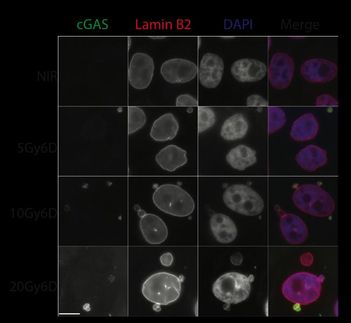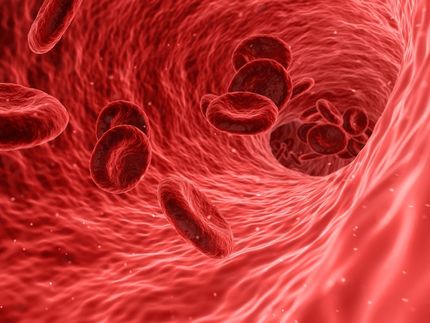New nanoparticles target cardiovascular disease
Could potentially eliminate need for arterial stents in some patients
Advertisement
Researchers at MIT and Harvard Medical School have built targeted nanoparticles that can cling to artery walls and slowly release medicine, an advance that potentially provides an alternative to drug-releasing stents in some patients with cardiovascular disease.
The particles, dubbed "nanoburrs" because they are coated with tiny protein fragments that allow them to stick to target proteins, can be designed to release their drug payload over several days. They are one of the first such particles that can precisely home in on damaged vascular tissue, says Omid Farokhzad, associate professor at Harvard Medical School and an author of a paper describing the nanoparticles in Proceedings of the National Academy of Sciences. Farokhzad and MIT Institute Professor Robert Langer, also an author of the paper, have previously developed nanoparticles that seek out and destroy tumors.
The nanoburrs are targeted to a specific structure, known as the basement membrane, which lines the arterial walls and is only exposed when those walls are damaged. Therefore, the nanoburrs could be used to deliver drugs to treat atherosclerosis and other inflammatory cardiovascular diseases. In the current study, the team used paclitaxel, a drug that inhibits cell division and helps prevent the growth of scar tissue that can clog arteries.
The researchers hope the particles could become a complementary approach that can be used with vascular stents, which are the standard of care for most cases of clogged and damaged arteries, or in lieu of stents in areas not well suited to them, such as near a fork in the artery.
The particles, which are spheres 60 nanometers in diameter, consist of three layers: an inner core containing a complex of the drug and a polymer chain called PLA; a middle layer of soybean lecithin, a fatty material; and an outer coating of a polymer called PEG, which protects the particle as it travels through the bloodstream. The drug can only be released when it detaches from the PLA polymer chain, which occurs gradually by a reaction called ester hydrolysis. The longer the polymer chain, the longer this process takes, so the researchers can control the timing of the drug's release by altering the chain length. So far, they have achieved drug release over 12 days, in tests in cultured cells.
In tests in rats, the researchers showed that the nanoburrs can be injected intravenously into the tail and still reach their intended target — damaged walls of the left carotid artery. The burrs bound to the damaged walls at twice the rate of nontargeted nanoparticles.
Because the particles can deliver drugs over a longer period of time, and can be injected intravenously, patients would not have to endure repeated and surgically invasive injections directly into the area that requires treatment, says Juliana Chan, a graduate student in Langer's lab and lead author of the paper.
Original publication: Juliana Chan, Liangfang Zhang, Rong Tong, Debuyati Ghosh, Weiwei Gao, Grace Liao, Kai Yuet, David Gray, June-Wha Rhee, Jianjun Cheng, Gershon Golomb, Peter Libby, Robert Langer, Omid Farokhzad; "Spatiotemporal controlled delivery of nanoparticles to injured vasculature"; Proceedings of the National Academy of Sciences 2010.





























































